Summary
The supervisory priorities set out focus areas for supervision in 2019. They build on an assessment of the key challenges facing supervised banks in the current economic, regulatory and supervisory environment.
ECB Banking Supervision has identified sources of banking sector risk in cooperation with the national competent authorities, drawing on input from the Joint Supervisory Teams (JSTs), ECB microprudential and macroprudential analyses, as well as reports by international bodies. The key drivers of banking sector risks identified are: geopolitical uncertainties, the stock of non-performing loans (NPLs) and potential for a build-up of future NPLs, cybercrime and IT disruptions, potential repricing in financial markets, the low interest rate environment, banks’ reaction to new and existing regulations, euro area economic and fiscal conditions, cases of misconduct, developments in real estate markets, structural business challenges, non-bank competition and climate-related risks. [1]
To ensure that banks address these key challenges effectively, ECB Banking Supervision has reviewed and streamlined its supervisory priorities. In the light of the risk situation outlined above, the Single Supervisory Mechanism (SSM) has set the following high-level priority areas for 2019:
- credit risk;
- risk management;
- activities comprising multiple risk dimensions.
These priority areas are largely continuing from 2018, with the exception of business models as major supervisory activities in this area have now been finalised.[2] Business models will continue to be supervised as part of the JSTs’ day-to-day supervision, for example in the context of the Supervisory Review and Evaluation Process (SREP).
For each of the priority areas, a number of supervisory activities will be carried out; more detail on such activities is provided below. The full implementation of these various activities may span more than one year.
1 Credit risk
Follow-up on NPL guidance
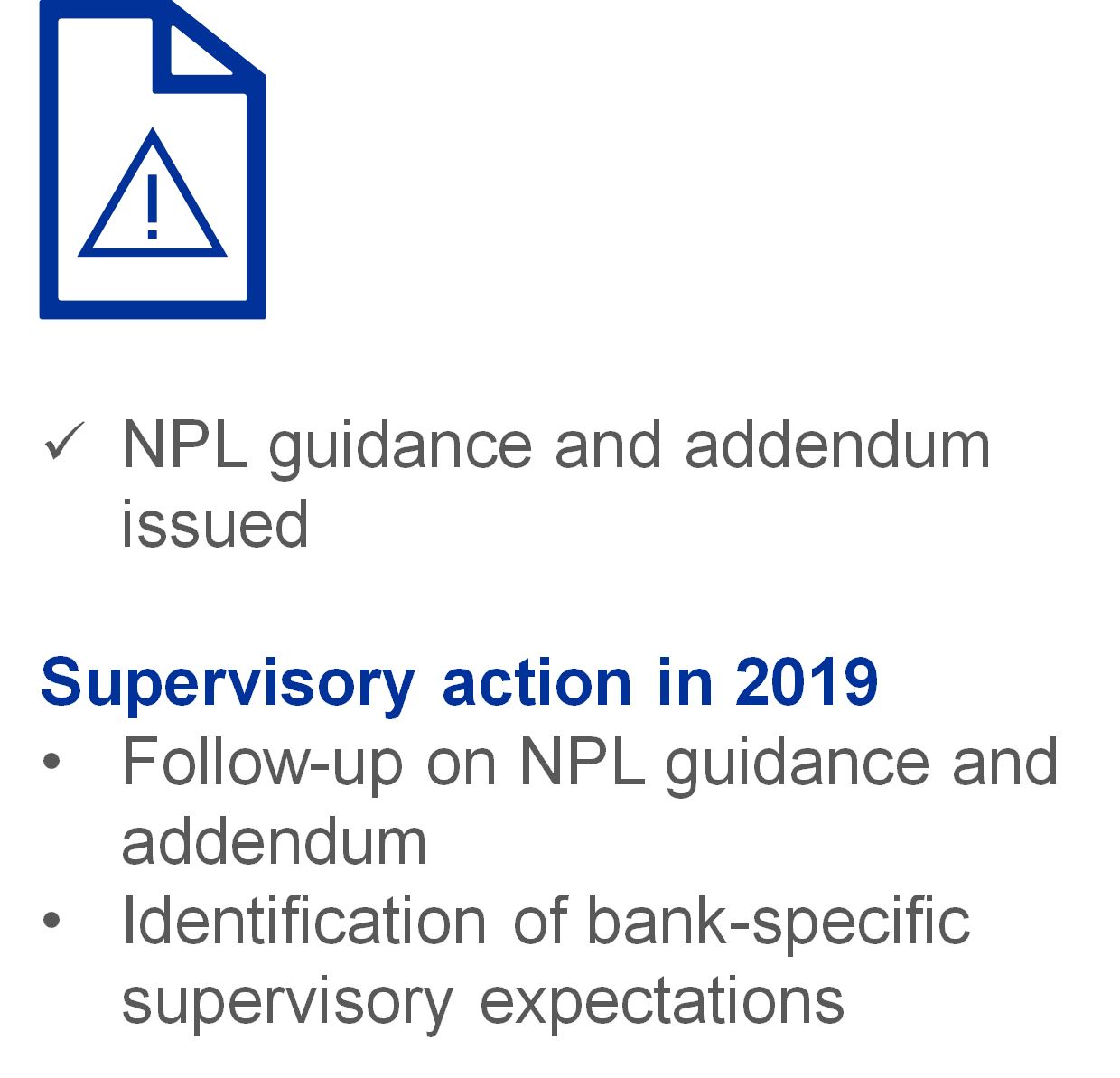
Credit risk remains an important supervisory priority in 2019. Despite the progress made in reducing the stock of NPLs in the euro area, the current aggregate level of NPLs remains elevated compared to international standards. ECB Banking Supervision will continue to address the stock of NPLs and will build on the work that has already been undertaken by engaging with affected institutions to define bank-specific supervisory expectations within a harmonised framework. The aim is to ensure continued progress to reduce legacy risks and achieve consistent coverage of the stock and flow of NPLs over the medium term.
Credit underwriting criteria and exposure quality
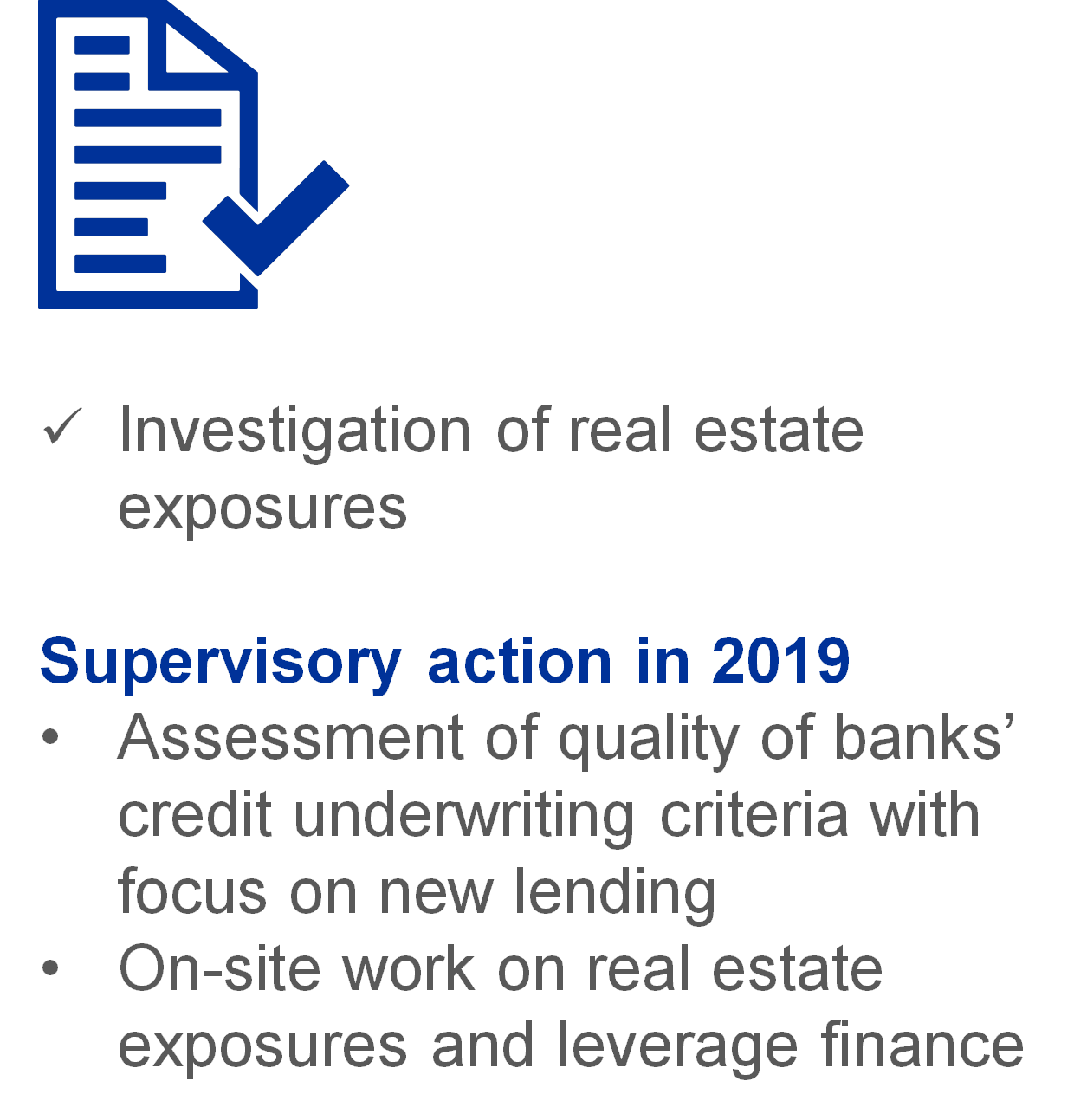
ECB Banking Supervision will assess the quality of banks’ underwriting criteria with a focus on new lending. The quality of banks’ lending practices will be examined and lending standards will be scrutinised with a view to mitigating potential risks. This work may result in bank-specific actions. In addition, the quality of specific asset class exposures will be examined through dedicated on-site inspections related to areas such as commercial real estate, residential real estate and leverage finance.
2 Risk management
In the area of risk management, numerous activities, such as the assessment of banks’ governance procedures, will be carried out as part of day-to-day supervision. Particular attention will be paid to the following initiatives.
Targeted review of internal models
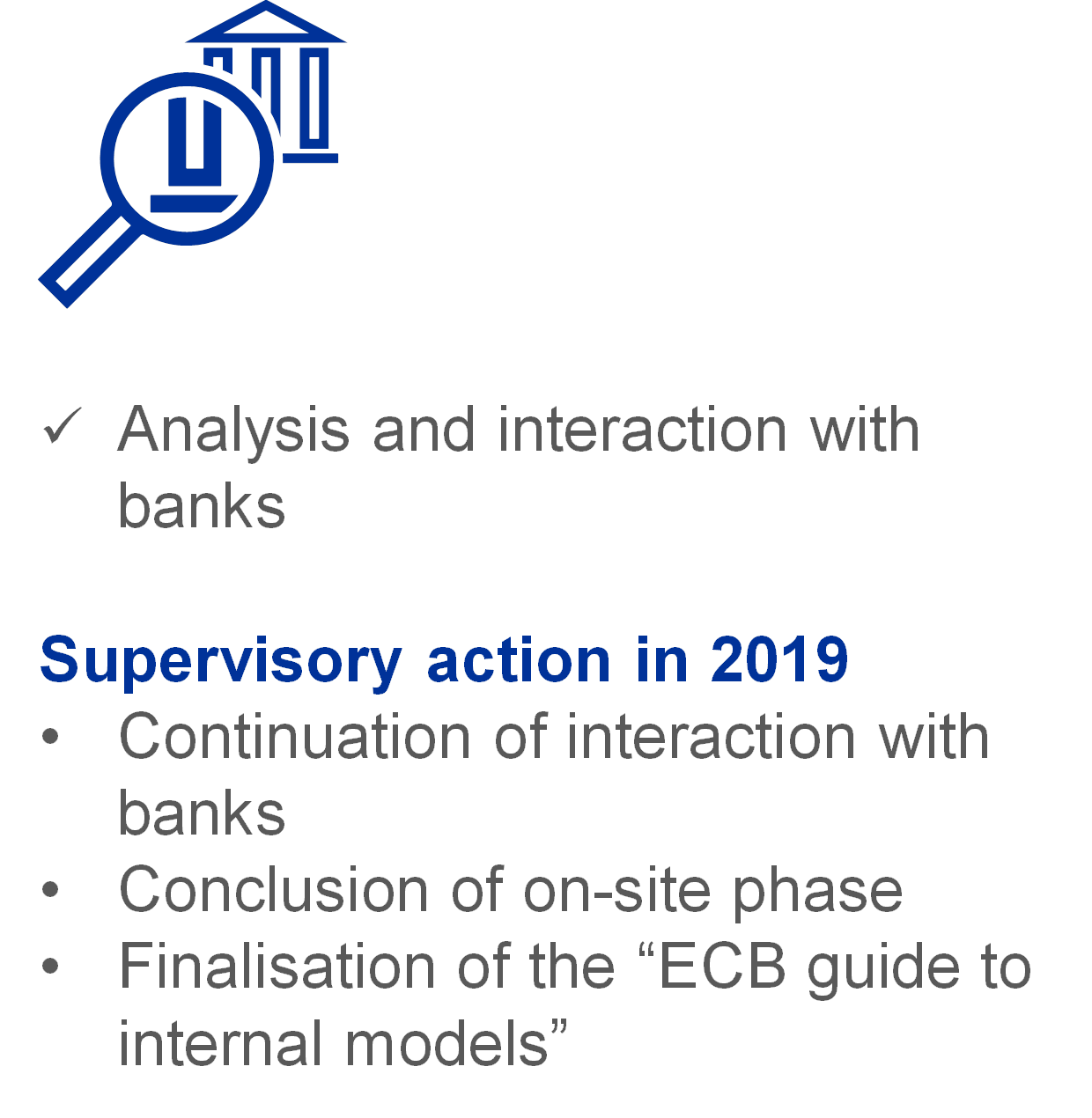
The targeted review of internal models (TRIM) will continue in 2019 with the overarching aim of reducing unwarranted variability of risk-weighted assets and confirming the adequacy of banks’ approved Pillar I internal models. In the course of 2019, ECB Banking Supervision intends to continue its TRIM on-site investigations, focusing mainly on the models used to assess the credit risk for exposures to medium-sized/large corporates and institutions and specialised lending. The ECB Banking Supervision will conduct horizontal analyses on the finalised investigations and will start to prepare a final project report. It also plans to update the existing ECB guide to internal models.
ICAAP and ILAAP
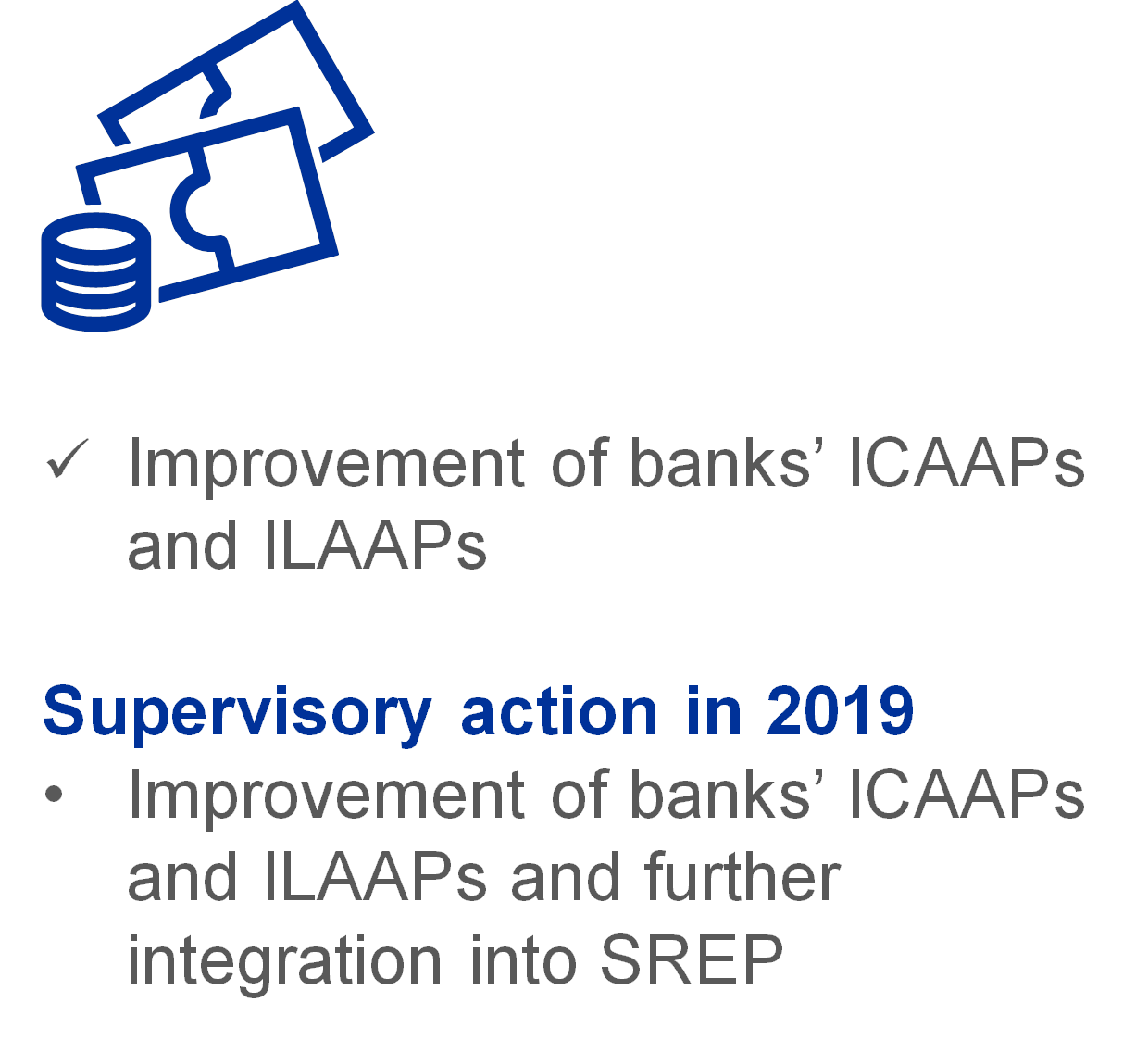
Internal capital and liquidity adequacy assessment processes (ICAAPs and ILAAPs) are key risk management instruments for credit institutions. ECB Banking Supervision reviews the quality of institutions’ ICAAPs and ILAAPs as a fundamental part of the SREP. Following on an intensive dialogue with banks, the finalised ECB guides on ICAAP/ILAAP will become available for use from 2019 onwards. Work will also continue on improving the transparency around the risk-by-risk composition of the Pillar II capital requirements.
IT and cyber risk
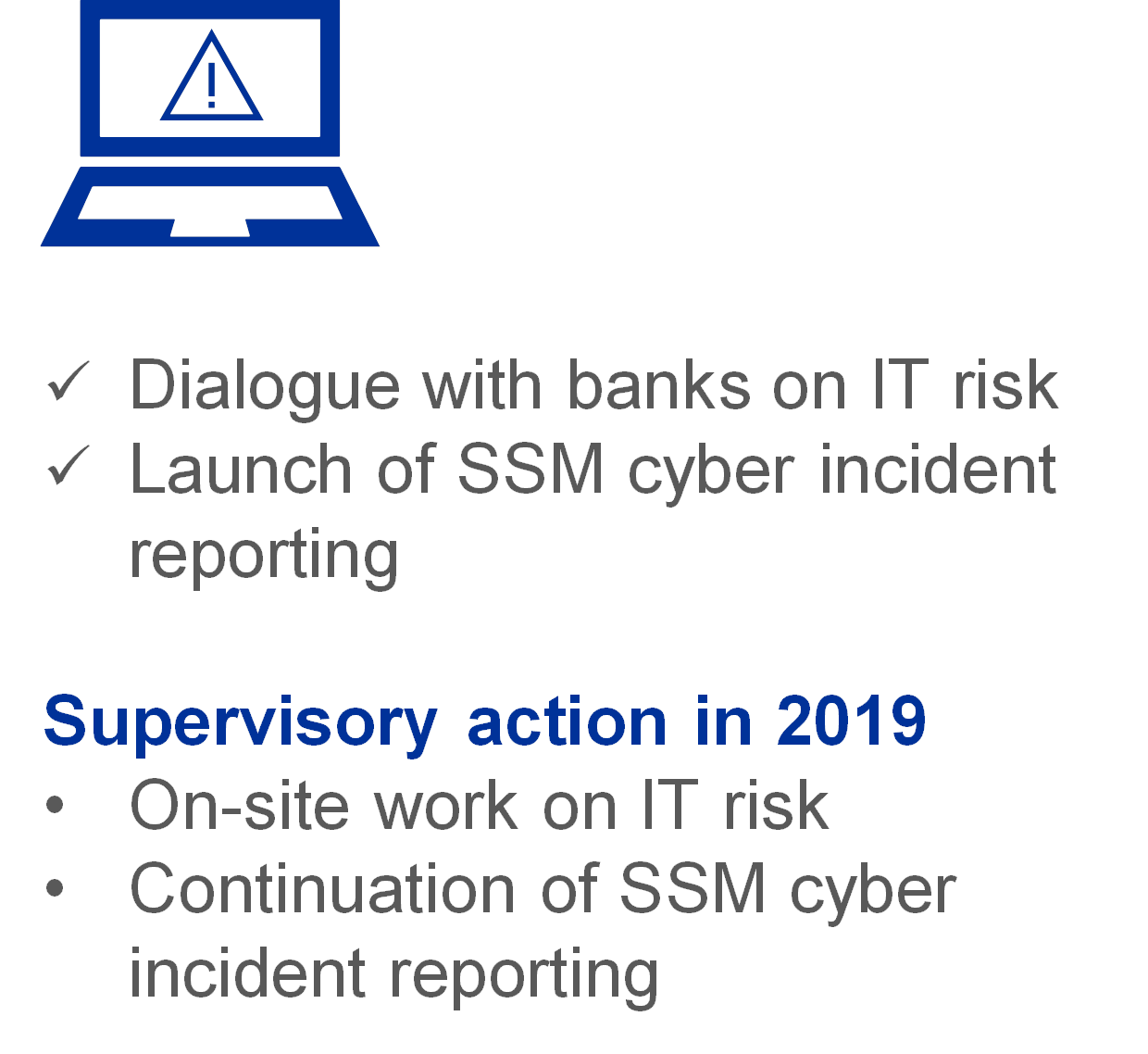
ECB Banking Supervision will continue to assess the IT and cyber risks facing banks and will launch a number of on-site inspections on IT risk-related topics. In addition, significant institutions will continue to report any significant cyber incidents to the ECB under the SSM cyber incident reporting process.
Liquidity stress test

As in 2017, the annual supervisory stress test in 2019 will be conducted with a focused scope. The 2019 stress test will seek to assess banks’ resilience against liquidity shocks. The individual banks’ stress test results will inform the SREP assessments.
3 Multiple risk dimensions
Supervisory activities planned for 2019 to address multiple risk dimensions include the ongoing preparations for Brexit and work relating to trading risk and asset valuations.
Brexit preparations
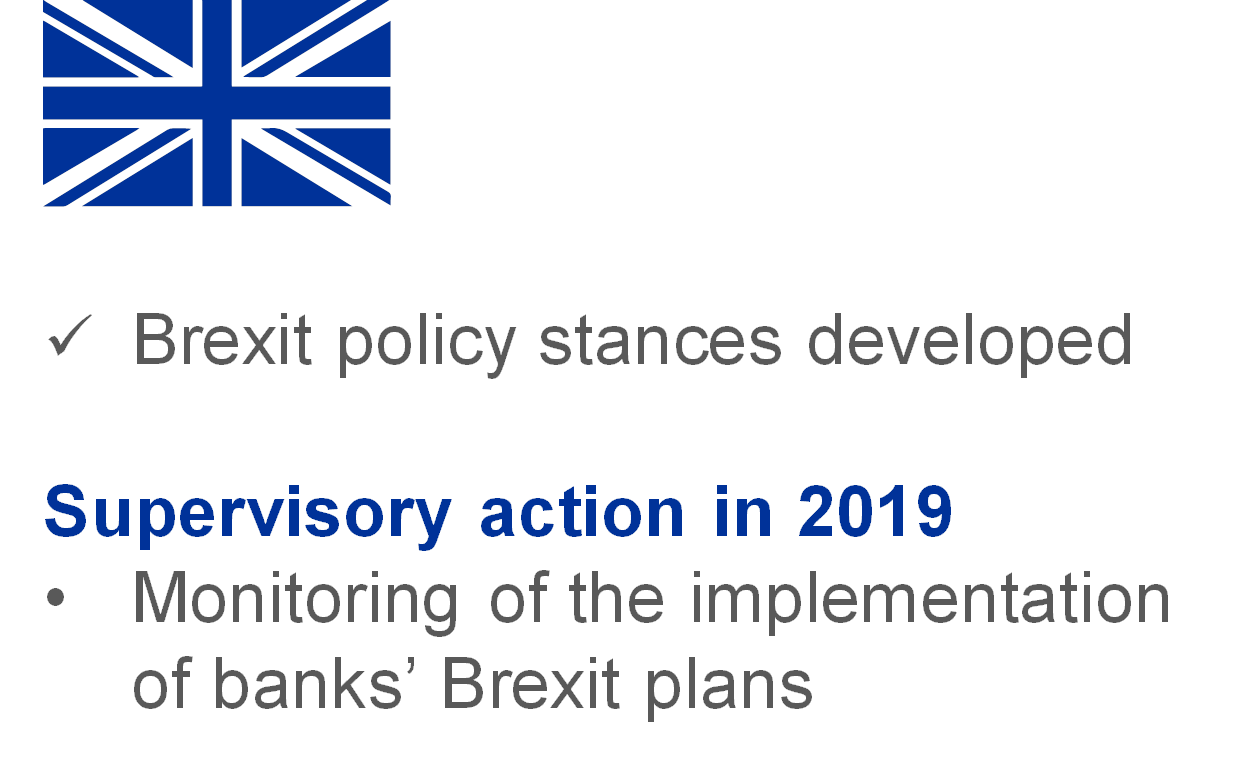
With the United Kingdom’s departure from the European Union scheduled for March 2019, banks’ preparedness for Brexit remains a high priority for ECB Banking Supervision. Supervisors will closely monitor the implementation of banks’ Brexit plans to ensure that they comply with supervisory expectations. This work is likely to be affected by the outcome of the political negotiations and the decision on whether there will be a transition period. Given the persisting uncertainties, ECB Banking Supervision has stressed that banks should be ready for all contingencies and should finalise their preparations. In addition, ECB Banking Supervision will further prepare to take over the direct supervision of a number of institutions that are newly identified as significant owing to the Brexit-induced relocation of activities from the United Kingdom to an SSM country.
Trading risk and asset valuations
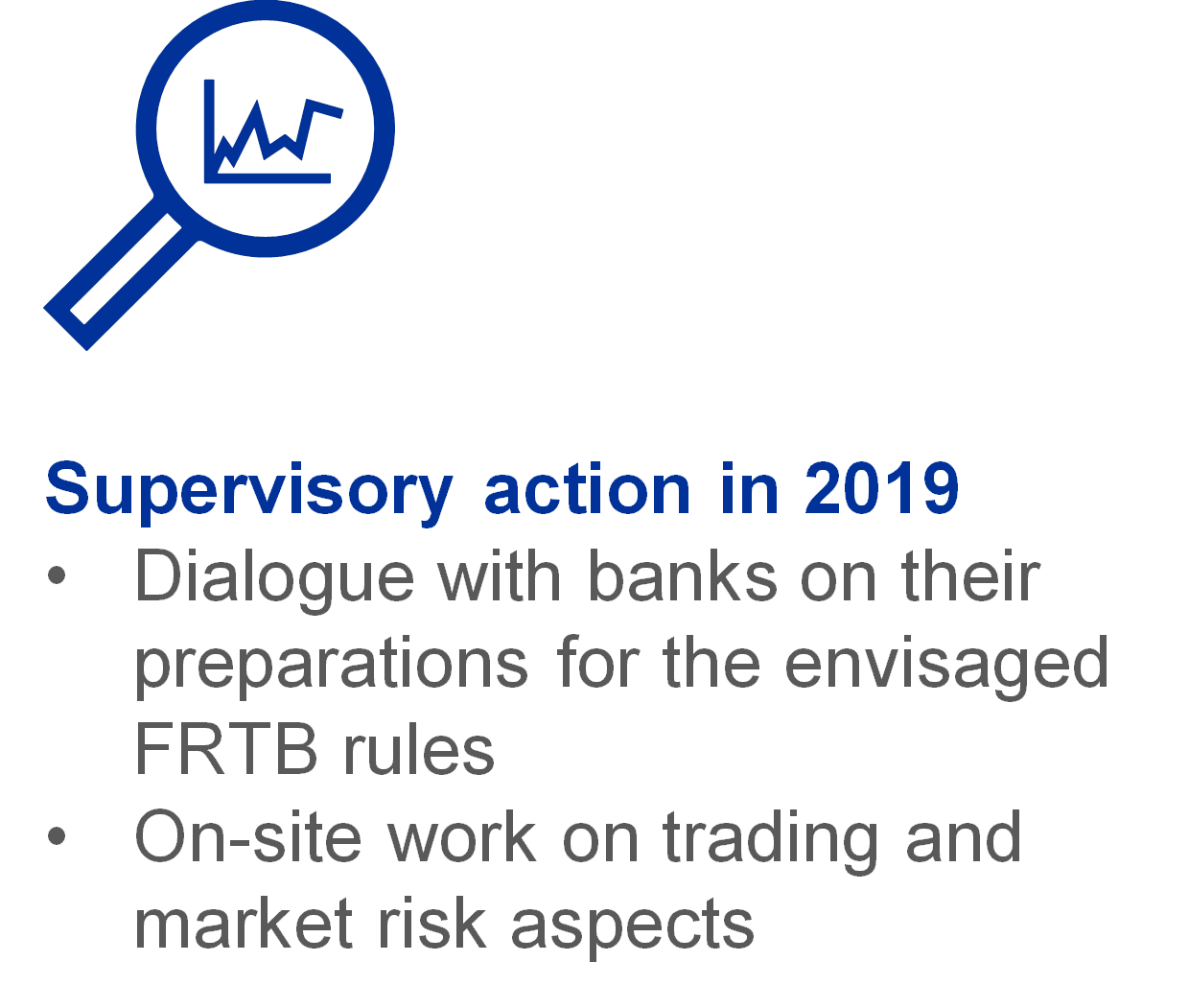
ECB Banking Supervision will continue its supervisory dialogue with significant institutions to gauge their state of preparation for the envisaged Fundamental Review of the Trading Book rules. This dialogue will seek to ensure that banks prepare their systems appropriately to comply with the new market risk framework. A number of on-site missions with an enhanced focus on trading and market risk aspects are also planned. In this context, JSTs may upfront conduct deep dives at selected banks in order to tailor the scope of the on-site missions to relevant risk areas.
The above outline of risks and the supervisory priorities should not be seen as an exhaustive list. Various activities not explicitly highlighted in this document are being carried out on an ongoing basis, such as those relating to IFRS 9 implementation, risk monitoring or the assessment of recovery plans. Moreover, differing supervisory activities, tailored to credit institutions’ specific risk profiles, may be required at bank level. Nonetheless, the supervisory priorities are an essential tool for coordinating supervisory actions across banks in an appropriately harmonised, proportionate and effective way, thereby contributing to a level playing field and a stronger supervisory impact.
© European Central Bank, 2018
Postal address 60640 Frankfurt am Main, Germany
Telephone +49 69 1344 0
Website www.bankingsupervision.europa.eu
All rights reserved. Reproduction for educational and non-commercial purposes is permitted provided that the source is acknowledged.
For specific terminology please refer to the SSM glossary.
PDF ISBN 978-92-899-3669-9, ISSN 2599-8420, doi:10.2866/256337, QB-BZ-18-001-EN-N
HTML ISBN 978-92-899-3666-8, ISSN 2599-8420, doi:10.2866/426970, QB-BZ-18-001-EN-Q
- See ECB Banking Supervision: Risk Assessment for 2019.
- E.g. the thematic review on banks’ business models and profitability drivers was finalised in 2018.


